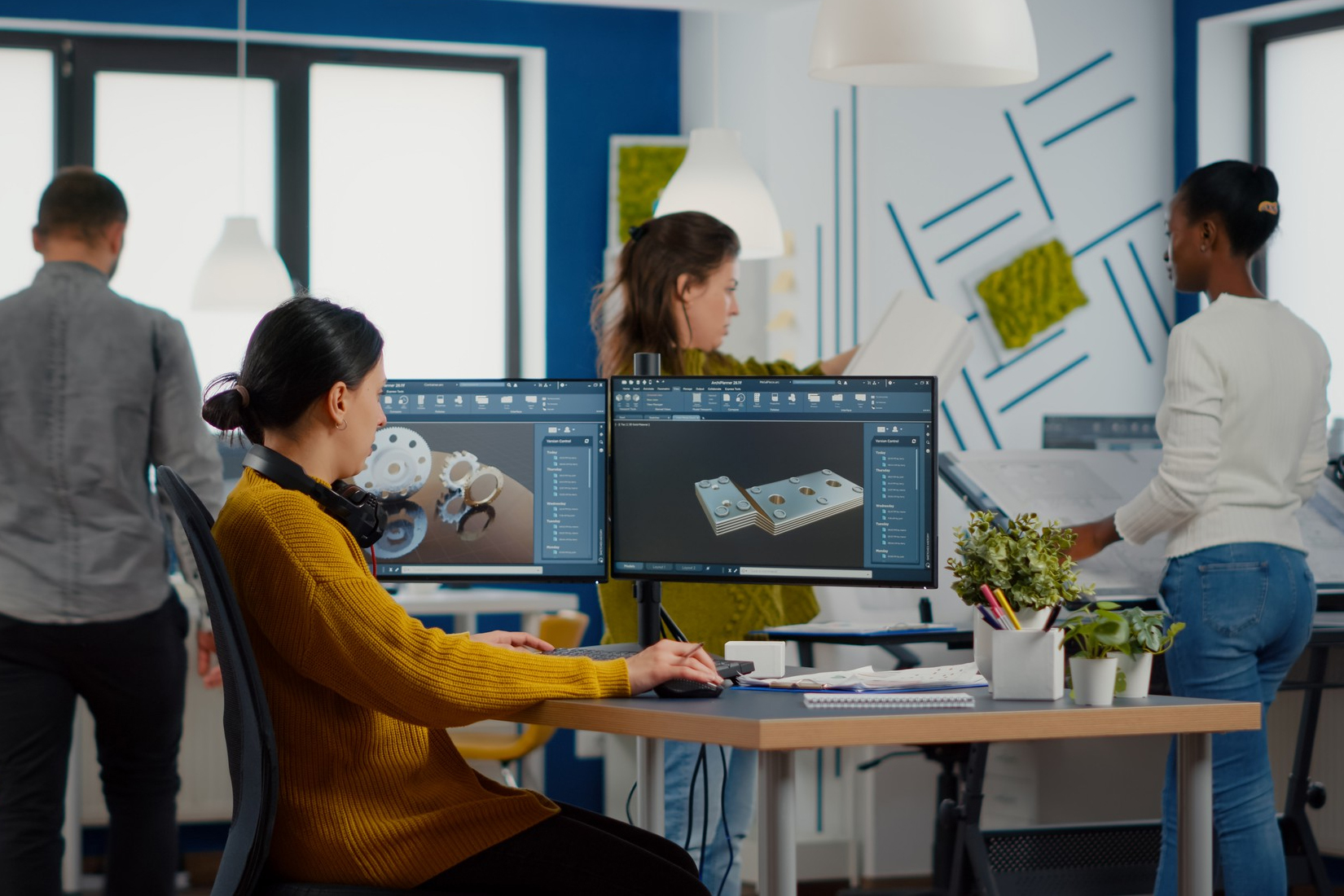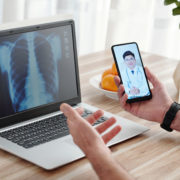The Impact of Digital Transformation on Company Culture
Digital twin technology was once a sci-fi tale. Now, it’s a transformative force, reshaping the way industries operate, ...
- July 14, 2025
- Prime News


July 14, 2025
Digital twin technology was once a sci-fi tale. Now, it’s a transformative force, reshaping the way industries operate, innovate, and compete. As organisations and professionals seek to harness the power of digitalisation, understanding the full potential of digital twin technology is quickly becoming essential. Whether you’re seeking to optimise your business or a consultant eager to work at the cutting edge of technological advancement, you’re in the right place. Let’s dive into this concept.
What’s the first thing that comes to our mind when we think of digital twins? For many, it’s a 3D replica of real-world objects. But this technology is much more than that. Digital twin technology is the creation of an exact virtual replica of a physical object, system, or product.
This digital model is continuously updated with real-time data, enabling it to mirror the current state, behaviour, and performance of its physical twin. Unlike traditional simulation modelling, which typically analyses isolated scenarios, digital twin technology offers a dynamic model that evolves alongside its physical counterpart.
The benefits for organisations are endless, since this technology bridges many gaps by providing a comprehensive view across the entire lifecycle of a product, system or an asset. Digital twin technology enables organisations to:
– Predict how the physical entity will behave in different scenarios
– Monitor assets and processes in real time
– Simulate and optimise workflows
– Anticipate risks and prevent failures with predictive maintenance
– Make data-driven decisions with greater confidence
The concept of digital twins was first introduced in the novel Mirror Worlds, published in 1991 by the Yale computer science professor David Gelernter. In the 90’s, digital twins were merely a literary concept. But it soon entered the market as a precious asset in product design, services and city planning. Digital twin technology was first introduced to the market in 2002 by Michael Grieves, an internationally renowned expert on digital twins.
Fast forward to 2002, the internationally renowned expert on digital twins Michael Grieves formally introduced this technology at the University of Michigan. NASA presented the first real use of twin technology in 2010, as a spacecraft’s simulation. Since then, digital twin simulation and software capabilities have made remarkable progress.
The advent of the current fourth industrial revolution has propelled digital twin technology to the forefront of industrial innovation. This technology uses big data analytics, cloud computing, artificial intelligence and IoT (Internet of Things) devices.
The global market for digital twin technology is projected to grow exponentially. According to the American research and advisory firm Gartner Research, the simulation digital twin market is expected to reach 379 billion US dollars (approximately 324 billion euros at today’s exchange rate) by 2034, up from 35 billion dollars (around 29 billion euros) in 2024. Other forecasts vary, but they all point to extraordinary growth, underlining digital twin technology’s increasing relevance and adoption across sectors.
How many people do we see daily carrying a smartphone or health-tracking wearables such as Apple Watches or Fitbits? Millions of us carry these technological marvels in our pockets or on our bodies in our everyday life. These devices are collecting personalised data about our habits, movements and health, which allows predictive maintenance.
The Internet of Things (IoT) is a network of these physical objects, which are embedded with sensors, software, and connectivity technologies: from the smartphone in our pocket to everyday household item or industry machinery. These objects exchange data with other devices and systems over the internet.
The synergy between digital twin technology and IoT is fundamental to its success. IoT devices serve as the sensory organs of the digital twin, collecting and transmitting real-time data from the physical world. This continuous data flow enables:
– Accurate, up-to-date digital representations
– Proactive identification of anomalies
– Enhanced predictive maintenance capabilities
As IoT adoption accelerates, the scope and accuracy of Digital Twin Technology will continue to expand, opening new avenues for innovation. Since IoT is opening the communication channels between the physical and the digital worlds and gaining a worldwide dimension, the digital twin technology is also becoming widespread.
Digital twin technology elevates simulation modelling to a new level. This method has long been a staple of industrial planning. But unlike static simulations, digital twins offer:
– Ongoing, real-time synchronisation with physical assets
– The ability to run multiple simulations simultaneously
– Insights that evolve as conditions change
This dynamic approach empowers organisations to test scenarios, forecast outcomes, optimise processes and make predictive maintenance with greater precision. By continuously monitoring equipment and analysing performance data, digital twins can detect early signs of wear or failure, schedule maintenance only when necessary (reducing unnecessary interventions) and extending the lifespan of assets. These benefits are particularly impactful in industries that rely on high-value machinery, such as manufacturing, energy, and transportation. This marks a new era in simulation modelling and predictive maintenance.
Across the globe, forward-thinking companies across diverse industries are leveraging digital twin technology to achieve versatility and tangible results.
Manufacturing remains the sector where digital twin technology has had the most profound impact. For example, leading manufacturers in the automotive industry in Germany use digital twins to test new vehicle designs virtually, accelerating development cycles and enhancing customisation. This helps them streamline production, improve product quality, and achieve unprecedented levels of operational efficiency.
By creating digital replicas of machines, production lines, or entire facilities, manufacturers in other industries are able to:
– Simulate production processes to identify and eliminate inefficiencies
– Customise product designs and test prototypes in a virtual environment
– Monitor equipment health in real time, enabling predictive maintenance and reducing unplanned downtime
In the realm of supply chain management, digital twin technology provides real-time visibility and agility, from inventory to delivery. By virtualising logistics networks, companies can:
– Optimise warehouse layouts and operational performance
– Predict the impact of packaging materials and shipping conditions
– Design efficient distribution routes based on real-time traffic and inventory data
This agility enables organisations to respond quickly to disruptions, reduce waste, and enhance customer satisfaction.
Architects, engineers, urban planners and city administrators are increasingly turning to Digital Twin Technology to build sustainable futures. Digital twins allow them to model and manage complex infrastructure systems. Applications include:
– Simulating traffic flows and optimising transport networks
– Managing utilities and energy consumption
– Enhancing disaster or emergency readiness through scenario modelling
By integrating real-time data from IoT sensors, cities can become more resilient, sustainable, and responsive to the needs of their citizens.
Personalisation and predictive insights are two examples of the many benefits that digital twin technology brings to the healthcare sector. Digital twins allow the medical industry to model human bodies, organs, or medical devices. This enables:
– Simulation of surgical procedures for better preparation
– Personalised treatment planning and outcome prediction
– Continuous monitoring of medical devices for predictive maintenance
Such innovations are paving the way for safer, more effective healthcare solutions and faster diagnosis.
Power plants and utility providers use digital twin technology to optimise operations and manage a wide range of processes more efficiently:
– Replicate and optimise plant operations
– Integrate renewable energy sources efficiently
– Monitor and maintain critical infrastructure
This results in improved safety, reduced operational costs, and enhanced sustainability.
As AI, machine learning, and cloud computing become more deeply integrated with digital twin technology, the possibilities are expanding rapidly. The next wave of digital twins will feature:
– Automated decision-making based on predictive analytics
– Scalable, cloud-based platforms for managing vast datasets
– Enhanced modelling of complex, interconnected systems
For both clients and consultants, staying ahead of these trends is vital to maintaining a competitive edge and leveraging the power of digital transformation. At PrimeIT, we understand that embracing digital twin technology is not just about adopting new tools: it’s about transforming your entire approach to business. Our team of expert consultants combines deep industry knowledge with technical excellence, guiding you through every stage of your digital twin journey.
Whether you are a client seeking to optimise operations, reduce costs, and drive innovation, or a consultant eager to work on groundbreaking projects, PrimeIT is your trusted partner. Digital twin technology is the foundation of the next industrial revolution. At PrimeIT, we’re already helping companies lead this revolution. Join us and be part of the future, today.
Need help integrating digital twin technology, IoT, predictive maintenance, or simulation modelling into your company? We’re here for you. Request a quote from PrimeIT today and let us help you unlock the full potential of digital transformation.
Digital twin technology was once a sci-fi tale. Now, it’s a transformative force, reshaping the way industries operate, ...

Digital twin technology was once a sci-fi tale. Now, it’s a transformative force, reshaping the way industries operate, ...

Digital twin technology was once a sci-fi tale. Now, it’s a transformative force, reshaping the way industries operate, ...

Please update your browser for the best experience and visualisation of this website.Update your browser now